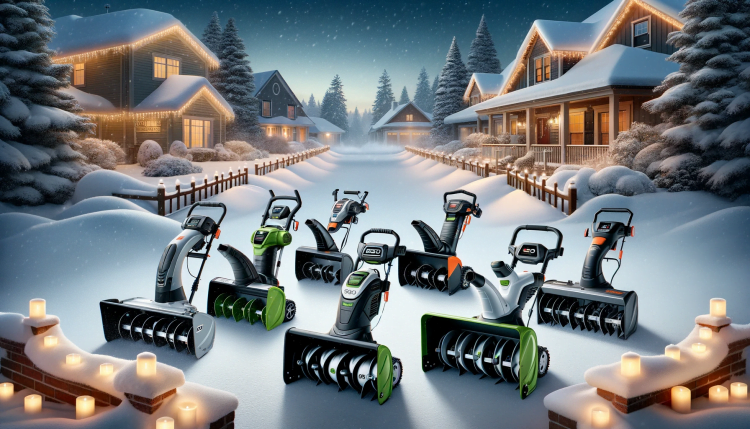Electric Skateboards Ultimate Guide
Electric skateboards have become increasingly popular in recent years as people search for new and exciting ways to get around that are also environmentally friendly. These innovative transportation devices combine the convenience of a skateboard with the speed and power of an electric motor, providing a fun and eco-friendly way to travel.
In this ultimate guide to electric skateboards, we’ll explore everything you need to know about these trendy devices, including how they work, their benefits, types available, safety tips, maintenance and upkeep, top brands on the market, how to choose the right board for you, electric skateboard culture, the future of electric skateboards, frequently asked questions, and resources for electric skateboard enthusiasts.

I. How Electric Skateboards Work
The Motor: The motor is the heart of the electric skateboard. It is typically located on the underside of the board and is responsible for driving the wheels. The motor is powered by the battery and can be controlled by the remote control. There are two main types of motors used in electric skateboards: hub motors and belt-driven motors.
Hub motors are built into the wheels of the skateboard, which makes them quieter and more efficient. They also require less maintenance than belt-driven motors. On the other hand, belt-driven motors are typically more powerful and provide better acceleration and braking.
The Battery: The battery is what powers the motor and allows the skateboard to move. Most electric skateboards use lithium-ion batteries, which are lightweight and have a high energy density. These batteries can be charged using a standard electrical outlet and typically take 1-3 hours to fully charge. The range of an electric skateboard depends on the size of the battery and the weight of the rider. Most electric skateboards can travel between 10-20 miles on a single charge.
The Remote Control: The remote control is used to control the speed and direction of the electric skateboard. It communicates with the motor via Bluetooth or another wireless connection. The remote control typically has a throttle that allows you to control the speed of the skateboard, as well as a brake that allows you to slow down or stop. Some remote controls also have a reverse function that allows you to move the skateboard backwards.
II. Benefits of Electric Skateboards
Electric skateboards offer a wide range of benefits to riders, making them an attractive option for both leisure and commuting purposes. Here are some of the key benefits of electric skateboards:
- Environmentally Friendly: One of the primary benefits of electric skateboards is their environmental friendliness. Unlike gas-powered vehicles, electric skateboards produce no emissions, making them a much more sustainable and eco-friendly mode of transportation. By choosing to ride an electric skateboard, you can reduce your carbon footprint and contribute to a cleaner and healthier environment.
- Cost Savings: Electric skateboards can help you save money on gas and car maintenance costs. You can charge your electric skateboard using a standard electrical outlet, which is significantly cheaper than filling up a gas tank. Additionally, electric skateboards require very little maintenance, making them a cost-effective transportation option.
- Convenience: Electric skateboards are also very convenient, offering a practical and efficient way to commute or travel. They are lightweight and portable, which means you can easily carry them onto public transportation or store them in a small space. Electric skateboards can also help you avoid traffic jams and crowded public transportation, giving you more control over your commute and travel plans.
- Fun and Enjoyable: Riding an electric skateboard can be a fun and enjoyable experience. With the ability to reach higher speeds and cover longer distances, electric skateboards provide a unique and exciting way to explore your surroundings. They are also easy to learn and can be enjoyed by people of all ages and skill levels.
- Health and Fitness: Finally, electric skateboards can offer health and fitness benefits. While electric skateboards provide motorized assistance, they still require some physical activity from the rider. By using an electric skateboard as a mode of transportation or for leisure activities, you can incorporate more physical activity into your daily routine and improve your overall health and fitness.
III. Types of Electric Skateboards
Electric skateboards come in a variety of types, including:
A. Hub motor vs belt-driven motor
When it comes to electric skateboards, one of the key decisions you’ll need to make is whether to go for a hub motor or a belt-driven motor. Both types of motors have their own unique features and advantages, so it’s important to understand the differences between them before making a decision.
Hub Motor vs Belt-Driven Motor
Hub Motor: A hub motor is an electric motor that is built directly into the wheel hub of the skateboard. This type of motor is compact, lightweight, and provides a clean and streamlined look to the board. Hub motors are also typically quieter than belt-driven motors, making for a more enjoyable and peaceful ride.
One of the main advantages of hub motors is their simplicity. They have fewer moving parts than belt-driven motors, which makes them more reliable and requires less maintenance. Hub motors also tend to have a smoother acceleration and braking system, as the motor is directly connected to the wheel and can adjust its speed more quickly and efficiently.
However, hub motors may not be as powerful as belt-driven motors and can struggle with steep hills or rough terrain. They also tend to generate more heat, which can affect their performance over time.
Belt-Driven Motor: A belt-driven motor is an electric motor that is connected to the wheels via a belt drive system. This type of motor provides more power and torque than a hub motor, making it better suited for steep hills and off-road terrain. Belt-driven motors are also more customizable, as riders can adjust the gear ratio and change the size of the wheels to optimize performance.
One of the main advantages of belt-driven motors is their power and speed. They can reach higher speeds and provide a more thrilling ride than hub motors. Belt-driven motors also tend to have a longer lifespan than hub motors, as they generate less heat and can handle more wear and tear.
However, belt-driven motors are typically heavier and bulkier than hub motors, which can affect the overall weight and maneuverability of the skateboard. They also require more maintenance than hub motors, as the belt drive system can wear out over time and need to be replaced.
B. Shortboard vs longboard
When it comes to choosing a skateboard, one of the key decisions you’ll need to make is whether to go for a shortboard or a longboard. Both types of skateboards have their own unique features and advantages, so it’s important to understand the differences between them before making a decision.
Shortboards: Shortboards are the most common type of skateboard and are typically used for tricks and stunts. They are shorter and narrower than longboards, making them more maneuverable and easier to control. Shortboards are also usually lighter, which allows for faster acceleration and better pop.
Shortboards are great for performing tricks and jumps, as they allow riders to easily kickflip, ollie, and perform other aerial maneuvers. They are also great for navigating through tight spaces and weaving through crowds.
Longboards: Longboards, on the other hand, are larger and heavier than shortboards. They are typically used for cruising and transportation rather than tricks and stunts. Longboards have a longer and wider deck, which provides a more stable and comfortable ride. They also have larger and softer wheels, which makes them better suited for cruising on rough surfaces.
Longboards are great for commuting or leisurely rides, as they offer a smooth and comfortable ride. They are also easier to balance on and provide better stability, which makes them a good choice for beginners or those who want to focus on cruising rather than tricks.
C. Off-road vs street
- Off-road Skateboards: Off-road skateboards, also known as all-terrain skateboards, are designed to handle rough and uneven surfaces such as dirt, gravel, and grass. They have large and wide wheels that provide better traction and stability on these types of surfaces. Off-road skateboards also typically have a wider and longer deck than street skateboards, which allows for a more stable and comfortable ride.
- Off-road skateboards are great for riders who want to explore rough terrain and ride in places where traditional street skateboards would struggle. They are also a good choice for those who want to ride in parks and other outdoor areas where the ground may be uneven or unstable.
- Street Skateboards: Street skateboards, also known as skateboards, are designed for riding on smooth and flat surfaces such as pavement and concrete. They typically have smaller and harder wheels than off-road skateboards, which provide a smoother and faster ride on these types of surfaces. Street skateboards also have a shorter and narrower deck than off-road skateboards, which makes them more maneuverable and better suited for tricks and stunts.
- Street skateboards are great for riders who want to perform tricks and stunts, ride in skate parks, or simply cruise around the city. They are also a good choice for those who want to use their skateboard as a mode of transportation on smooth and flat surfaces.
D. Pre-built vs DIY
- Pre-built boards are ready to use out of the box, while DIY boards require assembly and customization.
IV. Safety Tips for Riding Electric Skateboards
It’s important to wear appropriate protective gear when riding an electric skateboard, including a helmet, elbow and knee pads, and wrist guards. Additionally, it’s important to understand and follow local laws and regulations regarding the use of electric skateboards. Riding on appropriate surfaces, such as bike lanes or sidewalks, can also help keep you safe.
V. Maintenance and Upkeep of Electric Skateboards
Taking proper care of your electric skateboard is crucial for ensuring its longevity and optimal performance. Here are some important tips for maintaining and keeping your electric skateboard in top condition:
A. Cleaning and Storing the Board Properly
To keep your electric skateboard clean, wipe it down with a dry or slightly damp cloth after each use. Avoid using harsh chemicals or abrasive materials, as they can damage the surface of the board. If you’re riding in wet or muddy conditions, be sure to clean the wheels and bearings regularly, as dirt and debris can affect their performance.
When storing your electric skateboard, keep it in a cool, dry place and away from direct sunlight. Avoid storing it in areas with extreme temperatures or humidity, as this can damage the battery and other components of the board.
B. Replacing Worn-Out Parts as Needed
Like any piece of equipment, electric skateboards require periodic maintenance and replacement of parts that have worn out over time. The most common parts that need replacing are the wheels, bearings, and belts.
If you notice that your board is not performing as well as it used to, or if you hear strange noises coming from the board, it may be time to replace one or more of these parts. It’s important to replace worn-out parts promptly to avoid further damage to the board or potential safety hazards while riding.
C. Maintaining the Battery
The battery is one of the most important components of an electric skateboard, as it powers the motor and enables the board to move. To ensure optimal performance and battery life, it’s important to follow these guidelines:
- Charge the battery regularly: To maintain optimal battery health, it’s important to charge the battery regularly, even if you don’t use the board often. Most manufacturers recommend charging the battery at least once a month to keep it in good condition.
VII. Choosing the Right Electric Skateboard for You
When choosing an electric skateboard, it’s important to consider factors such as your riding style, skill level, and budget. Here are some tips for selecting the right board for your needs:
- Consider the terrain: If you’ll be riding on rough terrain, an off-road board with larger wheels may be more suitable than a street board.
- Think about range and speed: Depending on how far and how fast you want to travel, you may need a board with a longer range or higher top speed.
- Consider your skill level: If you’re a beginner, you may want to choose a board that’s easy to control and maneuver.
- Think about your budget: Electric skateboards can be expensive, so it’s important to set a budget and choose a board that fits within your price range.
| Feature | Description | Importance |
|---|---|---|
| Motor | Drives the wheels and determines the speed and power of the board | High importance |
| Battery | Provides power to the motor and determines the range of the board | High importance |
| Remote Control | Controls the speed and direction of the board | High importance |
| Deck | Supports the rider and affects the stability and comfort of the ride | Medium importance |
| Wheels | Allow the board to roll and affect the smoothness and grip of the ride | Medium importance |
| Trucks | Connect the wheels to the deck and affect the turning ability of the board | Medium importance |
| Bearings | Reduce friction and affect the speed and smoothness of the ride | Low importance |
| Charger | Used to charge the battery | Low importance |
| Brand/Manufacturer | Reputation and customer support | High importance |
| Price | Affordability and value for money | High importance |
VIII. Electric Skateboard Culture
Electric skateboarding has developed a vibrant and thriving culture that centers around a shared love for the sport. This community is made up of riders from all over the world who come together to share their experiences, learn from each other, and participate in events and competitions.
One of the main ways that electric skateboard culture is expressed is through clubs and groups that bring together riders with a shared passion for the sport. These clubs provide opportunities for riders to meet and ride together, share tips and tricks, and participate in organized events and competitions. Some clubs also organize group rides and tours, allowing riders to explore new locations and enjoy the thrill of electric skateboarding in a social setting.
Another important aspect of electric skateboard culture is the online community that has developed around the sport. There are many forums and social media groups where riders can connect, share their experiences, and seek advice from other riders. These online communities are a great way for riders to stay up to date on the latest electric skateboard technology, learn about new products and accessories, and connect with other riders who share their interests.
Electric skateboard culture is also expressed through events and competitions. There are many organized events and competitions for electric skateboard riders, ranging from informal group rides to more structured events with prizes and awards. These events provide riders with the opportunity to showcase their skills and compete against other riders, as well as to connect with other riders and enthusiasts.
IX. Future of Electric Skateboards
Emerging technologies in the electric skateboard industry, such as wireless charging and improved battery life, could change the way we commute and travel. As more people become aware of the benefits of electric skateboards, it’s likely that they’ll continue to gain popularity and become even more advanced and efficient in the years to come.
X. Frequently Asked Questions
- Are electric skateboards legal?
- Laws regarding the use of electric skateboards vary by location. It’s important to check with your local authorities to see if electric skateboards are legal in your area.
- How fast can electric skateboards go?
- The top speed of an electric skateboard varies depending on the model. Some can reach speeds of up to 30 miles per hour.
- How far can electric skateboards travel on a single charge?
- The range of an electric skateboard also varies depending on the model. Some can travel up to 20 miles on a single charge.
- How long does it take to charge an electric skateboard?
- Charging time varies depending on the battery and charger. Some boards can be fully charged in as little as 1-2 hours, while others may take up to 4 hours.
XI. Resources for Electric Skateboard Enthusiasts
If you’re interested in electric skateboarding, there are many resources available to help you learn more and connect with other riders. Here are some recommended resources:
- Electric Skateboard HQ: A website dedicated to all things electric skateboarding, including reviews, guides, and news.
- Electric Skateboard Builders Forum: A community of electric skateboard enthusiasts who discuss and share information about building and customizing electric skateboards.
- Evolve Skateboards Riders Group: A Facebook group for riders of Evolve Skateboards to connect and share their experiences.
Electric Skateboard STATS
- The global electric skateboard market is projected to reach $4.19 billion by 2028, growing at a CAGR of 12.2% from 2021 to 2028. (source: Allied Market Research) https://www.alliedmarketresearch.com/electric-skateboard-market
- In 2020, the average price of an electric skateboard was $627. (source: Statista) https://www.statista.com/statistics/1063118/average-price-of-an-electric-skateboard/
- The United States had the largest market share of the global electric skateboard market in 2020, accounting for 34.7% of the market. (source: Grand View Research) https://www.grandviewresearch.com/industry-analysis/electric-skateboard-market
- The average range of an electric skateboard is around 10-15 miles on a single charge. (source: Boosted Boards) https://boostedboards.com/blog/how-far-can-an-electric-skateboard-go/
- The average top speed of an electric skateboard is around 20 mph. (source: Inboard Technology) https://www.inboardtechnology.com/blogs/news/the-top-10-questions-about-electric-skateboards-answered
- Electric skateboards can save riders an average of $2,000 per year in transportation costs compared to owning a car. (source: Boosted Boards) https://boostedboards.com/blog/the-true-cost-of-commuting/
- In a survey of electric skateboard riders, 80% reported that they use their electric skateboard as a mode of transportation. (source: Statista) https://www.statista.com/statistics/1179473/electric-skateboard-riders-use-of-board-as-mode-of-transportation/
- The global electric skateboard market is projected to grow at a compound annual growth rate (CAGR) of 8.6% from 2021 to 2026. (source: ResearchAndMarkets.com) https://www.researchandmarkets.com/reports/5310446/electric-skateboard-market-forecast-to-2026
- The Asia-Pacific region is expected to be the fastest-growing market for electric skateboards, with a CAGR of 13.1% from 2021 to 2026. (source: ResearchAndMarkets.com) https://www.researchandmarkets.com/reports/5310446/electric-skateboard-market-forecast-to-2026
- In 2020, the most popular electric skateboard brand in the United States was Boosted Boards, followed by Evolve Skateboards and Meepo. (source: Statista) https://www.statista.com/statistics/1179467/most-popular-electric-skateboard-brands-in-the-us/
Conclusion to Electric Skateboard Guide
Electric skateboards offer a fun and eco-friendly mode of transportation that’s gaining popularity around the world. Understanding the different components of an electric skateboard, the benefits they offer, and how to ride them safely are important factors to consider before purchasing one. With the variety of types available on the market, it’s important to choose the right board for your needs, riding style, and budget.
The electric skateboard community is also growing and offers a unique culture of enthusiasts who enjoy events and competitions, as well as a shared passion for electric skateboarding. With emerging technologies in the industry, the future of electric skateboards looks exciting and could change the way we commute and travel. With the right resources and knowledge, anyone can enjoy the thrill of electric skateboarding while also contributing to a greener planet.
Electric skateboards are not only a fun way to get around, but they also offer a practical and eco-friendly alternative to traditional forms of transportation. With the variety of types available on the market, there is an electric skateboard for everyone, whether you’re a beginner or an experienced rider. By understanding the components of an electric skateboard, the benefits it offer, and how to ride them safely, you can enjoy the thrill of electric skateboarding while also contributing to a greener planet.
So why not give electric skateboarding a try? With the right resources and knowledge, you can join the growing community of electric skateboard enthusiasts and experience the fun and convenience of this exciting trend.
Find more interesting blogs under the other categories: Gadgets, Mobility (transportation), and Living! Thanks for stopping by!




Comments are closed.